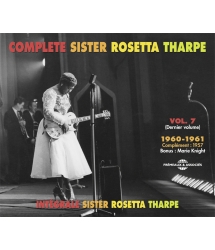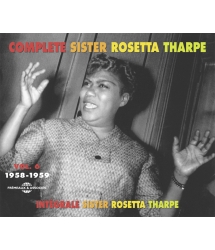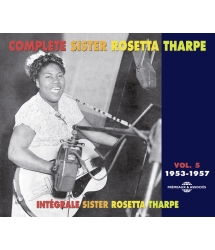- Our Catalog
- Philosophy
- Philosophers of the 20th century and today
- History of Philosophy (PUF)
- Counter-History and Brief Encyclopedia by Michel Onfray
- The philosophical work explained by Luc Ferry
- Ancient thought
- Thinkers of yesterday as seen by the philosophers of today
- Historical philosophical texts interpreted by great actors
- History
- Books (in French)
- Social science
- Historical words
- Audiobooks & Literature
- Our Catalog
- Jazz
- Blues
- Rock - Country - Cajun
- French song
- World music
- Africa
- France
- Québec / Canada
- Hawaï
- West Indies
- Caribbean
- Cuba & Afro-cubain
- Mexico
- South America
- Tango
- Brazil
- Tzigane / Gypsy
- Fado / Portugal
- Flamenco / Spain
- Yiddish / Israel
- China
- Tibet / Nepal
- Asia
- Indian Ocean / Madagascar
- Japan
- Indonesia
- Oceania
- India
- Bangladesh
- USSR / Communist songs
- World music / Miscellaneous
- Classical music
- Composers - Movie Soundtracks
- Sounds of nature
- Our Catalog
- Youth
- Philosophy
- News
- How to order ?
- Receive the catalog
- Manifesto
- Dictionnary











- Our Catalog
- Philosophy
- Philosophers of the 20th century and today
- History of Philosophy (PUF)
- Counter-History and Brief Encyclopedia by Michel Onfray
- The philosophical work explained by Luc Ferry
- Ancient thought
- Thinkers of yesterday as seen by the philosophers of today
- Historical philosophical texts interpreted by great actors
- History
- Books (in French)
- Social science
- Historical words
- Audiobooks & Literature
- Our Catalog
- Jazz
- Blues
- Rock - Country - Cajun
- French song
- World music
- Africa
- France
- Québec / Canada
- Hawaï
- West Indies
- Caribbean
- Cuba & Afro-cubain
- Mexico
- South America
- Tango
- Brazil
- Tzigane / Gypsy
- Fado / Portugal
- Flamenco / Spain
- Yiddish / Israel
- China
- Tibet / Nepal
- Asia
- Indian Ocean / Madagascar
- Japan
- Indonesia
- Oceania
- India
- Bangladesh
- USSR / Communist songs
- World music / Miscellaneous
- Classical music
- Composers - Movie Soundtracks
- Sounds of nature
- Our Catalog
- Youth
- Philosophy
- News
- How to order ?
- Receive the catalog
- Manifesto
- Dictionnary
1947-1951
ROSETTA THARPE
Ref.: FA1303
EAN : 3561302130323
Artistic Direction : JEAN BUZELIN
Label : Frémeaux & Associés
Total duration of the pack : 1 hours 53 minutes
Nbre. CD : 2
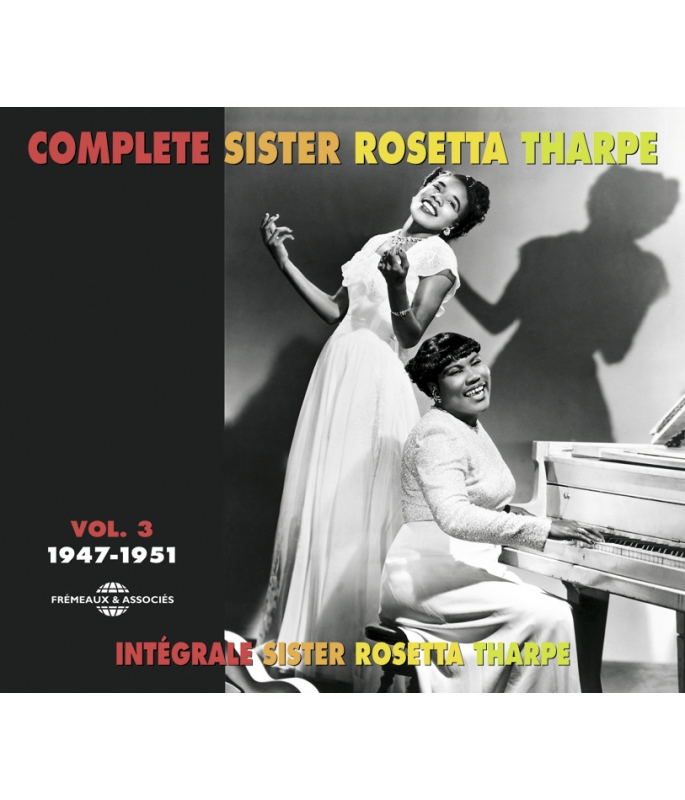
1947-1951
- - BLUES MAGAZINE * * *
- - INDISPENSABLE JAZZ HOT
- - * * * * SOUL BAG
1947-1951
(2-CD set) When they are sung with such faith and rhythm “nobody can resist the beauty and strength of true spirituals”. Sister ROSETTA THARPE
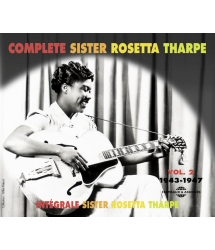
1943-1947
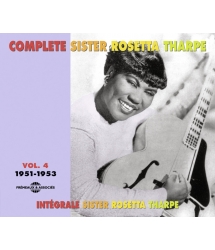
1951-1953
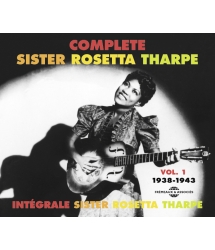
1938-1943
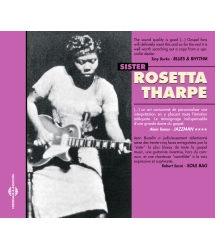
GOSPEL 1938-1943




-
PisteTitleMain artistAutorDurationRegistered in
-
1EVERYBODY S GONNA HAVE A WONDERFUL TIME UP THEREROSETTA THARPE00:02:441947
-
2MY LORD AND IROSETTA THARPE00:02:441947
-
3HE WATCHES MEROSETTA THARPEC H GABRIEL00:02:471948
-
4HE S ALL I NEEDROSETTA THARPEM KNIGHT00:03:091948
-
5DOWN BY THE RIVERSIDEROSETTA THARPE00:02:311948
-
6MY LORD S GONNA MOVE THIS WICKED RACEROSETTA THARPE00:02:321948
-
7AIN T NO ROOM IN CHURCH FOR LIARSROSETTA THARPE00:03:101948
-
8LITTLE BOY HOW OLD ARE YOUROSETTA THARPE00:02:261948
-
9GOING BACK TO JESUSROSETTA THARPE00:03:081948
-
10MOVE ON A LITTLE HIGHERROSETTA THARPE00:05:291948
-
11NINETY ONE AND A HALF WON T DOROSETTA THARPE00:02:391949
-
12DANIEL IN THE LION S DENROSETTA THARPE00:02:421949
-
13SILENT NIGHT HOLY NIGHTROSETTA THARPEJ MOHR00:02:401949
-
14WHITE CHRISTMASROSETTA THARPE00:02:451949
-
15HE AROSE FROM THE GRAVEROSETTA THARPEF R GRUBER00:03:001949
-
16PRESSING ON THE UPWARD WAYKATIE BELL NUBIN00:02:421949
-
17MY BODY BELONGS TO GODKATIE BELL NUBIN00:02:241949
-
18WHERE YOU THERE WHEN THEY CRUCIFIED MY LORDROSETTA THARPE00:03:161949
-
19BELLS OF ST MARY SROSETTA THARPE00:02:231949
-
PisteTitleMain artistAutorDurationRegistered in
-
1YOU GOTTA MOVEROSETTA THARPEL WILLIAMS00:02:441950
-
2WHEN I TAKE MY VACATION TO HEAVENROSETTA THARPER E WINSETT00:03:121950
-
3JESUS REMEMBERSROSETTA THARPE00:02:531950
-
4RUN TO JESUS EVERYONEKATIE BELL NUBIN00:02:351950
-
5IS EVERYBODY HAPPYKATIE BELL NUBIN00:02:501950
-
6I SHALL KNOW HIMROSETTA THARPE00:02:551950
-
7THERE S A HIGHWAY TO HEAVENROSETTA THARPEM GARDNER00:02:351950
-
8I M BOUND FOR HIGHER GROUNDSROSETTA THARPE00:02:421950
-
9I WAS HEALEDROSETTA THARPE00:03:101950
-
10USE ME LORDROSETTA THARPE00:02:561951
-
11SOMEBODY NEEDS JESUSROSETTA THARPE00:02:271951
-
12SIN IS TO BLAMEROSETTA THARPE00:02:191951
-
13I THANK GOD FOR MY SONGROSETTA THARPE00:03:071951
-
14THROW OUT THE LIFE LINEROSETTA THARPE00:02:511951
-
15BLESSED ASSURANCEROSETTA THARPE00:03:011951
-
16ROCK OF AGESROSETTA THARPEA TOPLADY00:03:141951
-
17IN THE GARDENROSETTA THARPE00:03:071951
-
18ROCK MEROSETTA THARPE00:02:151938
-
19THAT S ALLROSETTA THARPE00:01:391938
-
20SAVIOUR DON T PASS ME BYKATTY MARIE00:02:571947
-
21DIDN T IT RAIN CHILDRENSISTER KATTY MARIE00:02:231947
COMPLETE SISTER ROSETTA THARPEVOL. 3 fa1303
COMPLETE SISTER ROSETTA THARPE1947-1951
INTÉGRALE SISTER ROSETTA THARPE
VOL. 3
En cette fin d’année 1947 qui a vu la révélation de son duo constitué avec Marie Knight, Sister Rosetta Tharpe tient, si l’on peut se permettre cette formule, le haut du parvis. Mais le piédestal sur lequel la chanteuse-guitariste est solidement installée depuis une décennie va, sinon vaciller, du moins se resserrer pour laisser de la place. En effet, en ce mois de décembre, tout le monde (noir) s’arrache le nouveau disque que Mahalia Jackson vient d’enregistrer, Move On Up A Little Higher, deux faces d’un 78 tours qui se vend comme des petits pains bénis (1).Désormais, la petite Sister a une concurrente de poids en la personne de l’imposante Mahalia. Et ce dans un registre diamétralement différent qui nous rappelle – l’histoire décidément se renouvelle – d’autres rivalités aussi contrastées comme celle d’Ethel Waters et de Bessie Smith ou encore celle de Billie Holiday et d’Ella Fitzgerald.À la fin, donc, d’une année très riche en enregistrements, tant en solo qu’en duo avec Marie Knight, Sister Rosetta Tharpe se retrouve une dernière fois en studio, mais seule avec sa guitare en compagnie d’un quartette vocal masculin qui répond au nom des Dependable Boys. S’agit-il d’un chœur de studio anonyme, ou bien d’un ensemble de circonstance, ou encore d’un jubilee quartet connu ailleurs sous un autre nom ? il est bien difficile à présent d’avoir quelque information sur ce groupe. Prises sur tempo rapide, les interprétations gravées sont assez réussies, swinguantes et enlevées, même si Everybody’s Gonna Have A Wonderful Time… n’a pas grand-chose d’un Gospel Boogie, comme l’indique son sous-titre.
Près d’une année passe avant que Rosetta ne retrouve en studio les Dependable Boys, son accompagnateur favori Sammy Price et sa complice Marie Knight avec laquelle elle parcourt le pays en long et en large, les deux chanteuses se faisant acclamer dans les églises comme dans les théâtres, dans les grandes salles comme dans les rassemblements religieux en plein air. Pendant ce temps, leur disque Up Above My Head… est entré dans le Hot 100 en ce mois de décembre 1948 et atteindra la 43e place (2). Interviewée par François Postif pour Jazz Magazine lors de sa première venue en France en 1957, voici comment Rosetta Tharpe relatait les débuts du duo : “Mon premier mari m’a fait rencontrer une jeune personne qui chantait formidablement, Marie Knight. Elle avait à l’époque une voix grave et détendue qui s’alliait admirablement avec le timbre de ma propre voix. (…) Je vais vous raconter comment nous avons été engagées chez Decca : après quelques répétitions, nous sommes allées voir mon manager, et nous nous mîmes à chanter dans son bureau des gospels, comme Beams of heaven et le Didn’t It Rain. Il fut enthousiasmé, et décrocha immédiatement le téléphone pour appeler Dave Kapp, qui était à ce moment directeur artistique chez Decca. Quelques instants plus tard, nous chantions une fois de plus notre petit répertoire dans le micro du téléphone ; nous fûmes engagées sur le champ !Marie, c’est une chic fille. Nous avons eu beaucoup de succès ensemble.”(3)
Deux duos sont enregistrés dont un superbe He Watches Me, version musclée de l’hymne His Eye Is On The Sparrow où, cette fois-ci, nous entendons une véritable partie de gospel boogie jouée par le pianiste Sammy Price. Un peu en retrait au début du morceau, Marie Knight intervient progressivement avant que le duo se retrouve en parfaite osmose après le solo de guitare. Avec le chœur masculin, Rosetta grave seule cinq autres pièces (4) dont les negro spirituals traditionnels Down By The Riverside, autrefois chanté avec l’orchestre de Lucky Millinder (5), et Little Boy, qui raconte la présentation de Jésus aux Docteurs du Temple de Jérusalem, et dont le révérend Kelsey vient de donner une fracassante version. Mais c’est peut-être dans My Lord’s Gonna Move The Wickled Race, l’histoire de Nicodème, qui fut un ancien succès du Norfolk Jubilee Quartet, traité dans un style “actuel” avec un quartette vocal plus présent et expressif et une partie de batterie appuyée, ainsi que dans son propre Ain’t No Room In Church For Liars où, tout en fustigeant les menteurs, elle atteint ses meilleurs moments de complicité avec son pianiste, que la chanteuse-guitariste se montre le plus enthousiasmante.Cette période des débuts de “l’âge d’or du gospel”, où de nouveaux interprètes (solistes, quartettes masculins, ensembles féminins, chœurs mixtes) apparaissent sur un marché du disque dynamisé par la création de nombreuses petites marques indépendantes, favorise une émulation et chacun cherche à se réapproprier le succès du voisin. Ainsi Rosetta Tharpe reprend-elle un an plus tard le “tube” de Mahalia Jackson, Move On Up A Little Higher, toujours en deux parties et avec une association orgue (Sammy Price) et piano (Marie Knight) identique (et sans guitare). Si cette reprise n’a pas tout à fait la même ampleur, la même force (power) que le chef-d’œuvre de Mahalia, l’interprétation qu’en donne Rosetta, à la fois différente par la voix et la manière de chanter et proche par l’esprit, ne déçoit en aucune manière.
Durant cet été 1949, Sister Rosetta Tharpe convie pour la première fois sa mère, Katie Bell Nubin, à la rejoindre en studio. Née, d’après sa fille, autour de 1880, Katie Bell Nubin officiait dans une petite église de Memphis. “ Je me souviens que ma mère me tenait sur ses genoux lorsqu’elle jouait de l’harmonium à l’église, racontait encore Rosetta : je tapais d’un seul doigt le Near My God to Thee et ma mère m’accompagnait de la main gauche. Lorsque nous avons déménagé à Chicago, j’avais six ans, et je jouais déjà assez bien de la guitare. Une de nos voisines, Miss Foley, s’intéressa à moi et embaucha ma mère comme domestique pour m’avoir près d’elle. Mais un jour, ma mère en eu assez de travailler pour elle, et nous sommes parties toutes les deux en tournée dans les églises, sur les routes des États-Unis. Elle et moi, nous n’avons jamais cessé de chanter ensemble ; elle a soixante-dix-huit ans maintenant et joue de la mandoline. Elle est infatigable ! Nos deux grands succès sont Do It, dans lequel je joue de la guitare, et Ninety and a Half won’t Do.”(3) Il est touchant d’entendre la mère et la fille interpréter de manière si spontanée ce morceau qu’elles ont toujours chanté ensemble. Alors que leur style d’expression est voisin, le contraste surprend entre la voix légère et pétillante de Rosetta et celle, lourde, peu flexible et assez empâtée de Katie Bell ; toute la différence entre une professionnelle au talent hors du commun et une chanteuse amateur sincère mais déjà âgée.
Les interprétations gravées ce jour-là (6) n’ont certes pas le poli et la mise en place des duos habituels avec Marie Knight mais conviennent tellement mieux à la manière exubérante de Rosetta que les chants de Noël enregistrés deux mois plus tard, sans doute sous la directive d’un producteur désireux de ratisser un public plus large, celui-là même que Mahalia Jackson est en train de conquérir. Passe encore pour Silent Night, que Mahalia enregistrera à son tour un an plus tard (7), mais la chanson d’Irving Berlin White Christmas, créée par Bing Crosby dans le film “Holiday Inn” en 1942, n’est vraiment pas dans ses cordes avec accompagnement de célesta – l’instrument ici porte bien son nom – et chœur de… ne me faites pas écrire ce que j’ai envie de dire ! Heureusement, la pétulante Sister retrouve sa guitare, son sens du rythme et “ressuscite”, ce qui est de circonstance, dans un He Arose From The Grave qui lui convient beaucoup mieux (8).En décembre 1949, alors que nombreux petits souliers attendent près de la cheminée leur disque de Noël (Silent Night va grimper à la 6e place des meilleures ventes au Top national Rhythm & Blues), Rosetta Tharpe accompagne à la guitare sa mère qui, pour la première fois, enregistre seule. Puis elle repose à nouveau son instrument pour rejoindre ses Rosettes, au demeurant un bon ensemble de chanteuses qui va souvent l’accompagner désormais. Where You There When They Crucified My Lord, un hymne avec accompagnement d’orgue, ne manque pas de grandeur, mais le cantique Bells Of St. Mary’s, où une nouvelle fois le chœur murmure sur le célesta égrainé avec précaution par James Roots, n’ajoute rien à sa gloire.Heureusement, en mai 1950, Rosetta Tharpe retrouve Marie Knight pour six faces en duo dont les superbes I’m Bound For Higher Grounds et There’s A Highway To Heaven, la composition de Thomas Dorsey qui nous invite à emprunter l’autoroute du Ciel, chantés sur un accompagnement piano et orgue.
Elle soutient une dernière fois sa maman Katie Bell à la guitare dans deux solides interprétations (9) et les Rosettes sont toujours présentes dans Jesus Remembers, une prière de confiance bien lancée. La barre est donc redressée même si la guitare électrique de Rosetta semble avoir perdu un peu de son mordant bien que son jeu ne soit pas en cause. Penchons pour une idée – ils n’en manquent pas ! – de producteur ou d’ingénieur désirant modifier le “son” d’ensemble.Après toutes ces expériences en diverses compagnies, Sister Rosetta franchi une nouvelle fois la porte des studios en janvier 1951, guitare en bandoulière. Elle y retrouve son accompagnateur préféré Sammy Price dont le jeu est autrement swinguant que celui du consciencieux James Roots. Elle reprend à cette occasion Sin Is To Blame, autrefois interprété pour la radio avec l’orchestre d’Erskine Hawkins (2) ; un disque fort rare dont les grattements nous seront, je l’espère, pardonnés !Si les quatre morceaux réalisés ce jour-là sont typiques de la manière directe, communicative et pleine de joie qui a fait la réputation de Rosetta Tharpe auprès de sa communauté, les quatre qui suivent semblent à nouveau destinés à toucher un public différent, celui des Noirs des classes moyennes et aisées et celui des Blancs curieux qui découvrent les negro spirituals et les gospel songs authentiques tels que les chantent Mahalia Jackson, The Georgia Peach ou Marie Knight elle même dans ses propres œuvres (10). Interprétées dans un registre plus solennel, ces chansons intéressantes (par exemple la gospel waltz de Willie Mae Ford Smith, Throw Out The Life Line) même si parfois un peu grandiloquentes (les vieux hymnes Blessed Assurance et Rock The Ages) sont toutefois plus réussies que les “œuvres de commande“ citées plus haut. Les Rosettes chantent bien, mais quand on pense que la veille, dans le même studio, le fameux quartette masculin des Sensational Nightingales accompagnait Marie Knight, on a de quoi nourrir des regrets !
Le lendemain, Sister Rosetta Tharpe mettra en boîte huit nouveaux morceaux qui ouvriront notre prochain chapitre…Nous devons en effet interrompre là notre chronologie pour effectuer deux retours en arrière. Tout d’abord, ont été publiés depuis la parution de notre premier volume, deux témoignages de la participation de Rosetta Tharpe au premier concert “From Spirituals to Swing” organisé par le critique John Hammond au Carnegie Hall en décembre 1938 (11). Nous connaissions son inscription au programme de cet événement historique mais ignorions tout de sa prestation. Devant un public blanc cultivé et averti, Rosetta représentait le gospel de même que les Mitchell’s Christian Singers dans un genre plus archaïque. Accompagnée au piano probablement par Albert Ammons (12), elle interpréta notamment Rock Me et That’s All qu’elle avait gravé deux mois plus tôt lors de sa toute première séance de disques. D’autre part nous avons eu récemment connaissance d’un 78 tours Down Beat inconnu, un second disque gravé “clandestinement“ en Californie au mois de juillet 1947 sous le nom de Sister Katty Marie par Rosetta et, sur une face, Marie Knight (2).
Nous pensions les matrices de cette séance détruites sur décision de justice. Or, un exemplaire au moins de ce second disque, ignoré de tous les connaisseurs et discographes, avait été sauvé et s’est retrouvé, un demi-siècle plus tard, entre les mains de l’historien-musicien suédois Per Notini qui l’a mis à notre disposition. Grâce à son concours, nous pouvons publier pour la première fois les deux faces de cette précieuse et rarissime galette (13). Ainsi, et au delà de sa production Decca dont environ seize faces ici incluses n’avaient jamais été rééditées depuis leur parution en 78 tours, l’œuvre magistrale de cette admirable chanteuse et musicienne s’enrichit-elle de ces documents inestimables.En cette année 1951, Sister Rosetta Tharpe demeure au faîte de son art et de sa popularité. Pour preuve, au mois de juillet aura lieu un événement qui restera dans les mémoires : le remariage en grandes pompes de la Little Sister dans un stade de Washington devant plus de 20000 personnes. L’enregistrement en direct de cette cérémonie présidée par le révérend Kelsey, et à laquelle participaient de nombreux artistes de gospel, sera l’un des morceaux de choix du prochain chapitre de notre intégrale.
Jean Buzelin
Auteur de Negro Spirituals & Gospel Songs, Chants d’espoir et de liberté (Éd. Du Layeur/Notre Histoire, Paris 1998)
© FRÉMEAUX & ASSOCIÉS/GROUPE FRÉMEAUX COLOMBINI SA, 2003
Notes :
(1) In Complete Mahalia Jackson Vol. 1 (FA 1311).
(2) In Complete Sister Rosetta Tharpe Vol. 2 (FA 1302).
(3) François Postif, Jazz me Blues (Outre Mesure, Paris 1999).
(4) Un titre, Cleanse Me (mx 74647) est resté inédit et Little Boy a été essayé la veille (74642).
(5) In Complete Sister Rosetta Tharpe Vol. 1 (FA 1301).
(6) Dont deux inédits : The Devil Is Trying To Steel My Joy (75040) et Just Look (75041).
(7) In Complete Mahalia Jackson Vol. 3 (FA 1313).
(8) So High, gravé le même jour (75264), couplé avec Swing Low, Sweet Chariot, enregistré le 2 mai 1950 (76261), sous le numéro de catalogue 48160 est recherché par les amateurs du monde entier depuis vingt ans ; ce disque, dont l’une des faces pourrait être chantée par les Rosettes seules, n’est peut-être jamais sorti.
(9) Katie Bell Nubin réenregistrera, dix ans plus tard, le contenu d’un album 33 tours avec notamment Dizzy Gillespie !
(10) Voir Gospel/Sisters & Divas (FA 5053).
(11) In coffret From Spirituals to Swing (Vanguard 169-2).
(12) Bien qu’une photo du concert la montre en compagnie de Count Basie.
(13) Didn’t It Rain a été publié récemment dans le CD Marie Knight, “Hallelujah What a Song“ (Gospel Friend PL-1500).
La grande majorité des 78 tours ici réédités provient des collections de Daniel Gugolz, Hans Maitner, Jacques Morgantini, Fritz Mülhocker, Per Notini et Robert Sacré que nous remercions vivement.
Photos et collections : X (D.R), Jacques Morgantini/Pierre Allard, Per Notini, Robert Sacré, André Sas et Gilles Pétard qui nous a aimablement prêté la photo de couverture (Marie Knight et Rosetta Tharpe).
english notes
At the end of 1947, which had witnessed the revelation of her duos with Marie Knight, Sister Rosetta Tharpe was on the top rung of the Gospel ladder. However the pedestal on which the singer/guitarist had been so firmly enthroned for ten years, although it did not exactly begin to sway, it certainly began to narrow to make room for others. In fact, in December of that year, almost the entire black population was rushing to buy the record that Mahalia Jackson had just made, Move On Up A Little Higher, two sides of a 78 that sold like hot cakes (1).Henceforth, the little Sister had a strong rival in the imposing Mahalia. Their style was diametrically opposed, recalling—history certainly repeats itself—other equally contrasted rivalries such as those between Ethel Waters and Bessie Smith or Billie Holiday and Ella Fitzgerald. So, at the end of a year that had produced many recordings, both solo and in duo with Marie Knight, Sister Rosetta Tharpe was back in the studio once more, this time with her guitar and accompanied by a male voice quartet, the Dependable Boys. Little is known about the latter: were they an anonymous studio group, an occasional ensemble or a jubilee group known under another name? Taken at a fast tempo, the swinging, lively interpretations are quite good, although Everybody’s Gonna Have A Wonderful Time… has little of the Gospel Boogie its subtitle suggests. Almost a year passed before Rosetta teamed up again in the studios with the Dependable Boys, her favourite accompanist Sammy Price and the faithful Marie Knight with whom she toured the length and breadth of the country. The two singers were acclaimed in churches and theaters, in concert halls and at open-air religious meetings. Their recording of Up Above My Head…got into the Hot 100 in December 1948 and reached the 43rd spot (2).
Interviewed by François Postif for Jazz Magazine on her first visit to France in 1957 Rosetta Tharpe recounted the duo’s beginnings: “My first husband introduced me to a young woman with a fantastic voice, Marie Knight. At that time she had a deep, relaxed voice which blended perfectly with the timbre of my own voice (…) I’ll tell you how we were hired by Decca: after a few rehearsals we went to see my manager and started singing Gospel songs in his office, like Beams Of Heaven and Didn’t It Rain. He was really enthusiastic and immediately picked up the phone to call Dave Kapp, then Decca’s artistic director. A few seconds later we were singing our small repertory again, this time into the telephone mike and we were hired on the spot! Marie is a great girl. We made a lot of hits together.” (3)Two duos were recorded including a superb He Watches Me, a powerful version of the hymn His Eye Is On The Sparrow with, this time, a real gospel boogie contribution from Sammy Price on piano. Staying a little in the background at the beginning of the piece Marie Knight comes in little by little until the duo achieves perfect harmony after the guitar solo. Rosetta cut five other titles alone with the male vocal group (4), including the traditional Negro spirituals Down By The Riverside, that she had sung earlier with Lucky Millinder’s orchestra (5), and Little Boy, the story of Jesus in the Temple at Jerusalem and which Reverend Kelsey had just made a sensational version of. But it is perhaps on My Lord’s Gonna Move This Wicked Race (the story of Nicodemus and one of the Norfolk Jubilee Quartet’s old hits) given a more updated treatment with the vocal quartet more in evidence plus emphatic backing from the drums, as well as on her own Ain’t No Room In Church For Liars where her complicity with her pianist is at its best, that she is the most exciting.
This early period of “The Golden Age of Gospel”, when new performers (soloists, male voice quartets, female groups, mixed choirs) were appearing on the record market, re-vitalised by the setting up of numerous small independent labels, encouraged imitation with everybody trying to cash in on others’ hits. So, a year later Rosetta Tharpe did her own version of Mahalia Jackson’s hit Move On Up A Little Higher, again in two parts with an identical accompaniment of organ (Sammy Price) and piano (Marie Knight) and without guitar. While this reprise lacked the scope and power of Mahalia Jackson’s masterpiece, Rosetta’s interpretation, although the voice was not the same, was very close in feeling to the original and leaves little to be desired.During the summer of 1949, for the first time Sister Rosetta Tharpe invited her mother, Katie Bell Nubin to join her on a recording. Born, according to her daughter, around 1880, Katie Bell officiated in a small Memphis church. “I remember my mother holding me on her knees while she played the harmonium in church,“ Rosetta recalls; “I played Nearer My God To Thee with one finger while my mother accompanied me with her left hand. I was six when we moved to Chicago and could already play the guitar quite well. One of our neighbours, Miss Foley, took an interest in me and hired my mother as a maid to keep me close to her. But one day my mother got fed up of working for her and we set off on a tour of the churches throughout the States. Her and me, we never stopped singing together; she’s seventy-eight now and plays the mandolin. She never gets tired! Our two great hits are Do It, on which I play guitar, and Ninety And A Half Won’t Do.” (3) It is very moving to hear the mother and daughter interpret so spontaneously this title that they had always sung together.
While their way of expressing themselves is similar, there is a surprising contrast between the light, sparkling voice of Rosetta and the heavier, somewhat thick and inflexible tones of Katie Bell; the difference between a talented professional and a sincere but much older amateur.The sides cut during this session (6), although not as polished as her usual duos with Marie Knight, suit Rosetta’s exuberant style much better than the Christmas carols recorded two months later, doubtless the idea of a producer who wanted to reach the wider public that Mahalia Jackson was in the process of taking over. Although her interpretation of Silent Night, recorded by Mahalia a year later (7), left nothing to be desired, she was not at all at ease on Irving Berlin’s White Christmas (created by Bing Crosby in “Holiday Inn” in 1942) backed by a celesta and choir…enough said! Fortunately, Rosetta takes up her guitar again, along with her innate sense of rhythm, on He Arose From The Grave which is much closer to her own style (8).In December 1949, when everybody was hoping to find a Christmas record in their stocking (Silent Night climbed to 6th place on the Top National Rhythm & Blues best selling list) Rosetta Tharpe on guitar accompanied her mother who, for the first time recorded solo. Then she put her instrument aside once more to team up with her Rosettes, an excellent female vocal group, which henceforth accompanied her regularly. Although the hymn Were You There When They Crucified My Lord, with organ accompaniment, is not lacking in grandeur, The Bells Of Saint Mary’s, where once again the choral hums to James Roots’ celesta, does little for her reputation.Fortunately, in May 1950, Rosetta teamed up again with Marie Knight for six sides, including the superb I’m Bound For Higher Grounds and There’s A Highway To Heaven, composed by Thomas Dorsey, the vocal backed by piano and organ. She accompanied her mother Katie Bell one last time on guitar for two solid interpretations (9) and the Rosettes are again present on Jesus Remembers.
So Rosetta was back on top, even though her electric guitar seemed to have lost a little of its bite her playing was just as good. This lack of bite may have been because a producer or sound engineer wanted to modify the overall sound!After all these various experiments, Sister Rosetta, guitar in hand, returned to the studios in January 1951. She was with her favourite accompanist, Sammy Price, whose swing was somewhat different from that of the conscientious James Roots. She did a reprise of Sin Is To Blame, previously interpreted on radio with Erskine Hawkins’ orchestra (2): an extremely rare disc so please forgive the scratchy sound! While the four titles cut during this session are typical of Rosetta’s direct, forthright and joyful approach so much appreciated by her black public, the four that follow appear destined for a different audience i.e. middle class, comfortably-off black Americans and white Americans eager to discover authentic Negro Spirituals and Gospel songs, as sung by Mahalia Jackson, The Georgia Peach and even Marie Knight under her own name (10). Given a more solemn treatment, these interesting songs (e.g. Willie Mae Ford Smith’s Gospel waltz Throw Out The Life Line) although occasionally a little grandiloquent (the old hymns Blessed Assurance and Rock Of Ages) are more successful than the above-mentioned “commercial” titles. The Rosettes sing very well but, only the day before, the renowned male voice quartet, the Sensational Nightingales, had accompanied Marie Knight…just imagine if they had been there for Rosetta! The following day, she recorded a further eight titles with which we will open our next chapter…At this point we must interrupt our chronological story to take a couple of steps backwards and incorporate two flashbacks. Since our first volume was issued two articles have been published on Rosetta Tharpe’s participation in the first “From Spirituals To Swing” concert organised by John Hammond at the Carnegie Hall in December 1938 (11).
We knew that she took part in this legendary concert but had no details at all about her performance. In front of an intelligent and knowledgeable white audience, Rosetta represented Gospel as did the more primitive Mitchell’s Christian Singers. Probably accompanied on piano by Albert Ammons (12), she interpreted Rock Me and That’s All which she had recorded two months previously during her first ever recording session.In addition, an unknown Downbeat 78 disc has recently been brought to our attention, a second “clandestine” recording made by Rosetta in California in July 1947 under the name of Sister Katty Marie with, on one side, Marie Knight (2). It seems that the matrix of this session was destroyed following a court order. However, a copy of this second record, completely unknown to connoisseurs and discographers, was saved and found fifty years later and now is part of the collection of Swedish musician/historian Per Notini who made it available to us. Thanks to him we are able to issue for the first time both sides of this extremely rare disc (13). Together with the sixteen Decca 78s included here that have never been reissued before, they add to the rich tapestry of work produced by this wonderful singer and musician.In 1951, Sister Rosetta Tharpe’s popularity was at its height. So much so that her wedding in July in a Washington stadium before an audience of 20,000 became a never-to-be-forgotten event. The live recording of the ceremony, presided over by the Reverend Kelsey and at which numerous Gospel singers performed, will feature in our next volume devoted to Rosetta Tharpe.
Adapted from by Joyce Waterhouse from the French text of Jean Buzelin
Author of Negro Spirituals & Gospel Songs, Chants d’espoir et de liberté (Ed. Du Layeur/Notre Histoire, Paris, 1998).
© FRÉMEAUX & ASSOCIÉS/GROUPE FRÉMEAUX COLOMBINI SA, 2003
Notes:
(1) In Complete Mahalia Jackson Vol. 1 (FA 1311).
(2) In Complete Sister Rosetta Tharpe Vol. 2 (FA 1302).
(3) François Postif, Jazz Me Blues (Outre Mesure, Paris, 1999).
(4) One title, Cleanse Me (mx 74617) was unissued and Little Boy was tried out the day before (74612).
(5) In Complete Sister Rosetta Tharpe Vol. 1 (FA 1301).
(6) Including two unissued tracks, The Devil Is Trying To Steal My Joy (75040) and Just Look (75041).
(7) In Complete Mahalia Jackson Vol. 3 (FA 1313).
(8) So High, cut the same day (75264), coupled with Swing Low Sweet Chariot, recorded 2 May 1950 (76261), under the catalogue number 48160 has been sought after by fans world wide for over 20 years. This record, one side probably sung by the Rosettes alone was perhaps never issued.
(9) Ten years later Katie Bell Nubin recorded a 33 rpm album with notably Dizzy Gillespie.
(10) See Gospel Sisters & Divas (FA 5053).
(11) On the From Spirituals To Swing boxed set (Vanguard 169-2).
(12) Although a photo of the concert shows her alongside Count Basie.
(13) Didn’t It Rain was issued recently on the CD Marie Knight : “ Hallelujah What A Song ” (Gospel Friend PL-1500).
The majority of the 78s reissued here come fom the collections of Daniel Gugolz, Hans Maitner, Jacques Morgantini, Fritz Mülhocker, Per Notini and Robert Sacré to whom our grateful thanks.
Photos and collections: X (D.R.), Jacques Morgantini, Pierre Allard, Per Notini, Sammy Price, Robert Sacré, André Sas and Gilles Pétard who kindly lent us the cover photograph.
CD1
1. EVERYBODY’S GONNA HAVE A WONDERFUL TIME UP THERE
(GOSPEL BOOGIE) (L.R. Abernathy) 74491-A
2. MY LORD AND I (R. Tharpe) 74492-A
3. HE WATCHES ME (C.D. Martin - C.H. Gabriel - arr. R. Tharpe) 74637-A
4. HE’S ALL I NEED (R. Tharpe - M. Knight) 74638-A
5. DOWN BY THE RIVERSIDE (Trad. - arr. R. Tharpe) 746410
6. MY LORD’S GONNA MOVE THIS WICKED RACE (Trad.) 746430
7. AIN’T NO ROOM IN CHURCH FOR LIARS (R. Tharpe) 74646-A0
8. LITTLE BOY HOW OLD ARE YOU (Trad.) 746480
9. GOING BACK TO JESUS (R. Tharpe) 74649
10. MOVE ON UP A LITTLE HIGHER Pt. 1 & 2 (W.H. Brewster) 74676-A/74677-A
11. NINETY NINE AND A HALF WON’T DO (Trad. - arr. R. Tharpe) 75038
12. DANIEL IN THE LION’S DEN (HE LOCKED THE LION’S JAW) (Trad. - arr. K. Bell Nubin) 75039
13. SILENT NIGHT, HOLY NIGHT (F. Grüber - J. Mohr) 75259
14. WHITE CHRISTMAS (I. Berlin) 75260
15. HE AROSE FROM THE GRAVE (Trad. - F. Grüber) 75261-A
16. PRESSING ON THE UPWARD WAY (Trad. - arr. K. Bell Nubin) 75586-A
17. MY BODY BELONGS TO GOD (Trad. - arr. K. Bell Nubin) 75587-B
18. WERE YOU THERE WHEN THEY CRUCIFIED MY LORD ? (Trad.) 75588
19. BELLS OF ST. MARY’S (Unknown) 75589
(1-2) Sister Rosetta Tharpe (g, vo), acc. The Dependable Boys (male vo 4tet). New York City, December 30, 1947.
(3-6) Sister Rosetta Tharpe (g, vo) & Marie Knight (vo on 3, 4), acc. Sam Price Trio : Sammy Price (p), Billy Taylor Snr (b), Herbert Cowans (dm), The Dependable Boys (vo on 5, 6). NYC, December 2, 1948.
(7-9) Same but Marie Knight out ; The Dependable Boys (vo on 8, 9). NYC, December 3, 1948.
(10) Sister Rosetta Tharpe (vo), acc. Marie Knight (p) & Sam Price Trio : Sammy Price (org), Walter Page (b), Kansas Fields (dm). NYC, January 11, 1949.
(11-12) Sister Rosetta Tharpe (g, vo) & Her Mother (Katie Bell Nubin) (vo), acc. Sam Price Trio : Sammy Price (p), Billy Taylor Snr (b), Herbert Cowans (dm). NYC, July 7, 1949.
(13-15) Sister Rosetta Tharpe (g on 15, vo), acc. James Roots Quartet : James Roots (celeste on 13, 14, p on 15), Grady Martin (g on 15), Billy Taylor Snr (b), Herbert Cowans (dm), The Rosette Gospel Singers : Sarah Brooks, Lottie Henry (soprano vo), Barbara Johnson, Erma Wallace (contralto vo). NYC, September 14, 1949.
(16-17) Katie Bell Nubin (vo), acc. Rosetta Tharpe (g) & James Roots Trio : James Roots (p), Billy Taylor Snr (b), Herbert Cowans (dm). NYC, December 12, 1949.
(18-19) Sister Rosetta Tharpe (vo), acc. James Roots Trio : same but Roots (org on 18, celeste on 19) ; The Rosette Gospel Singers (vo) added. Same date.
CD2
1. YOU GOTTA MOVE
(J. Daniel - E.J. Butrum - L. Williams) 76254-A
2. WHEN I TAKE MY VACATION TO HEAVEN (H. Buffum - R.E. Winsett) 6255-A
3. JESUS REMEMBERS (Trad. - arr. R. Tharpe) 76260
4. RUN TO JESUS EVERYONE (Unknown) 76264-A
5. IS EVERYBODY HAPPY (Unknown) 76265-A
6. I SHALL KNOW HIM (Unknown - arr. R. Tharpe) 762680
7. THERE’S A HIGHWAY TO HEAVEN (T.A. Dorsey - M. Gardner) 76269-A0
8. I’M BOUND FOR HIGHER GROUNDS (Unknown) 76270-A0
9. I WAS HEALED (Unknown) 76271
10. USE ME LORD (R. Tharpe) 80324
11. SOMEBODY NEEDS JESUS (R. Tharpe) 80325
12. SIN IS TO BLAME (D.R.) 80326
13. I THANK GOD FOR MY SONG (T.A. Dorsey) 80327
14. THROW OUT THE LIFE LINE (W.M. Ford Smith) 80587
15. BLESSED ASSURANCE (Trad.) 80588
16. ROCK OF AGES (T. Hastings - A. Toplady) 80589
17. IN THE GARDEN (Trad.) 80590
18. ROCK ME (T.A. Dorsey)
19. THAT’S ALL (R. Tharpe)
20. SAVIOUR DON’T PASS ME BY (R. Tharpe) DB-106A
21. DIDN’T IT RAIN CHILDREN (Trad. - arr. R. Tharpe & H. Knight) DB-106B
(1-3) Sister Rosetta Tharpe (g on 3, vo) & Marie Knight (vo on 1, 2), acc. James Roots Quartet : James Roots (p), Alfred Miller (org on 1, 2), Billy Taylor Snr (b), John Hartzfield (dm), The Rosettes (female vo group on 3). NYC, May 2, 1950.
(4-5) Katie Bell Nubin (vo), acc. Rosetta Tharpe (g) & James Roots Trio : same but Miller out. NYC, May 3, 1950.
(6-9) Sister Rosetta Tharpe (g on 6, 7, 8, vo) & Marie Knight (vo), acc. James Roots Quartet : same as for (1-2). NYC, May 3, 1950.
(10-13) Sister Rosetta Tharpe (g, vo), acc. Sam Price Trio : Sammy Price (p), Walter Page (b), Herbert Cowans (dm). NYC, January 11, 1951.
(14-17) Sister Rosetta Tharpe (vo), acc. Larry Johnson (org), The Rosette Gospel Singers (vo). NYC, February 20, 1951.
(18-19) Rosetta Tharpe (g, vo), acc. Albert Ammons (p). Carnegie Hall, NYC, December 23, 1938.
(20-21) Sister Katty Marie : Rosetta Tharpe (g, vo), Marie Knight (vo on 21), unknown (p) (b). Los Angeles, July, 1947.
CD Complete Sister Rosetta Tharpe Vol 3 © Frémeaux & Associés (frémeaux, frémaux, frémau, frémaud, frémault, frémo, frémont, fermeaux, fremeaux, fremaux, fremau, fremaud, fremault, fremo, fremont, CD audio, 78 tours, disques anciens, CD à acheter, écouter des vieux enregistrements, albums, rééditions, anthologies ou intégrales sont disponibles sous forme de CD et par téléchargement.)
